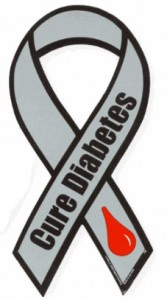 According to the numbers from The American Diabetes Association, nearly 24 million Americans have diabetes. If that number isn’t alarming enough, expert are expecting a steep increase in those numbers in the coming decades.
According to the numbers from The American Diabetes Association, nearly 24 million Americans have diabetes. If that number isn’t alarming enough, expert are expecting a steep increase in those numbers in the coming decades.
While the current number of diabetics in the U.S. is close to 10 percent, it may reach 33 percent of the population in another generation (2050) if we don’t do something about it. Think about that for a second: one in three people may be diabetic in the not-so-distant future.
The irony is that this potentially fatal disease is on the rise, in part, because people are living longer. That’s because diabetes becomes more prevalent in older people. Also, people who are already diabetic can live longer due to the effectiveness of modern insulin delivery methods. Lastly, diabetes has always been more prevalent in minority populations, and those populations are on the rise in the U.S. Both Hispanic and African Americans are over the 10 percent mark for diabetes.
We all know that the most effective way of preventing diabetes is a healthy diet and plenty of exercise, but the effectiveness was made more specific in a large government study that looked into those people who are most susceptible to getting diabetes. According to the Diabetes Prevention Program conducted by the National Institutes of Health, lifestyle changes such as eating a healthier diet and increasing exercise may reduce those people’s type 2 diabetes risk by as much as 58 percent.
The American Diabetes Association estimates the cost of diabetes to be $174 billion, which is broken down into $116 billion for direct medical costs and $58 billion for indirect costs, such as disability and loss of work.
(via: Time)
